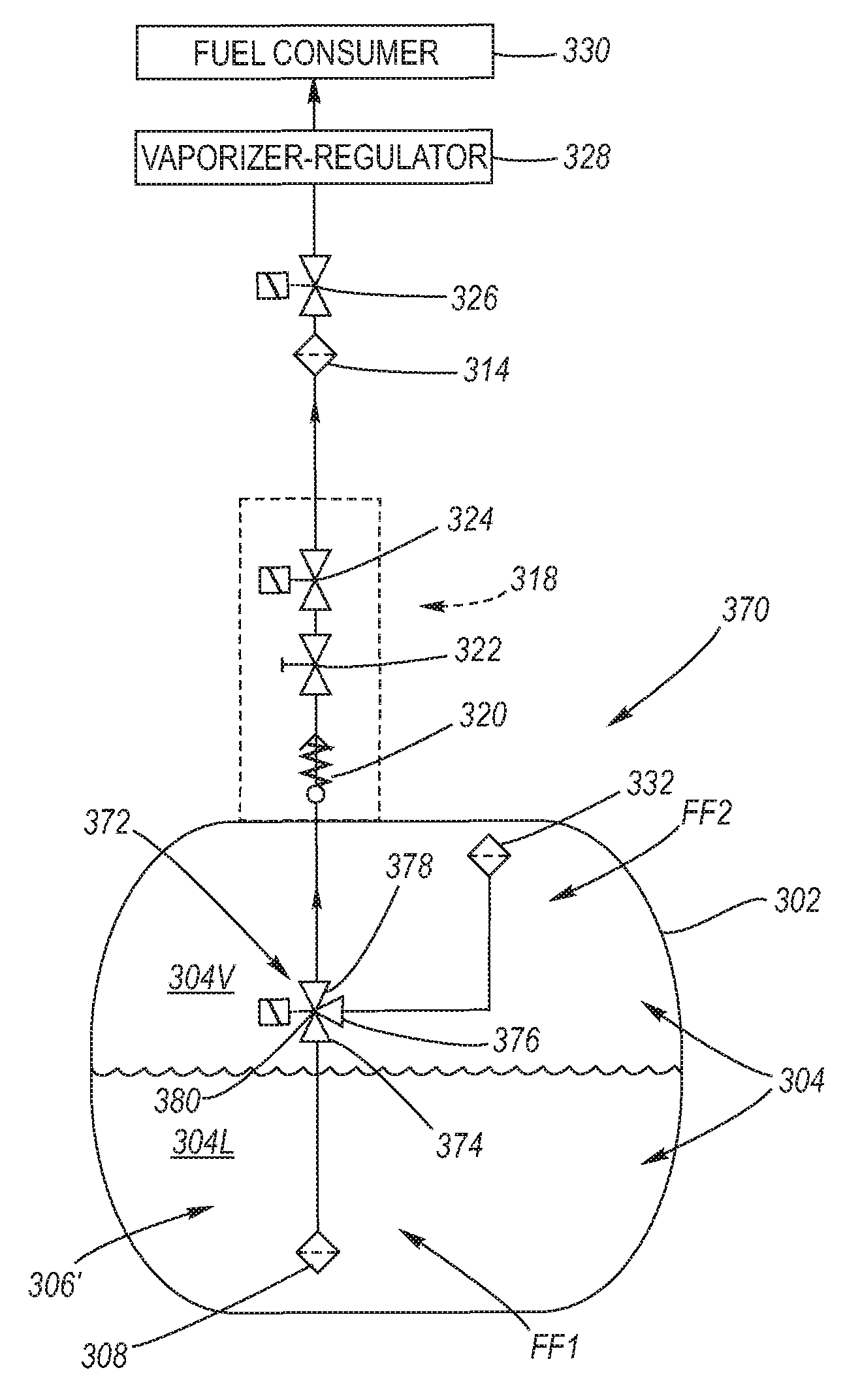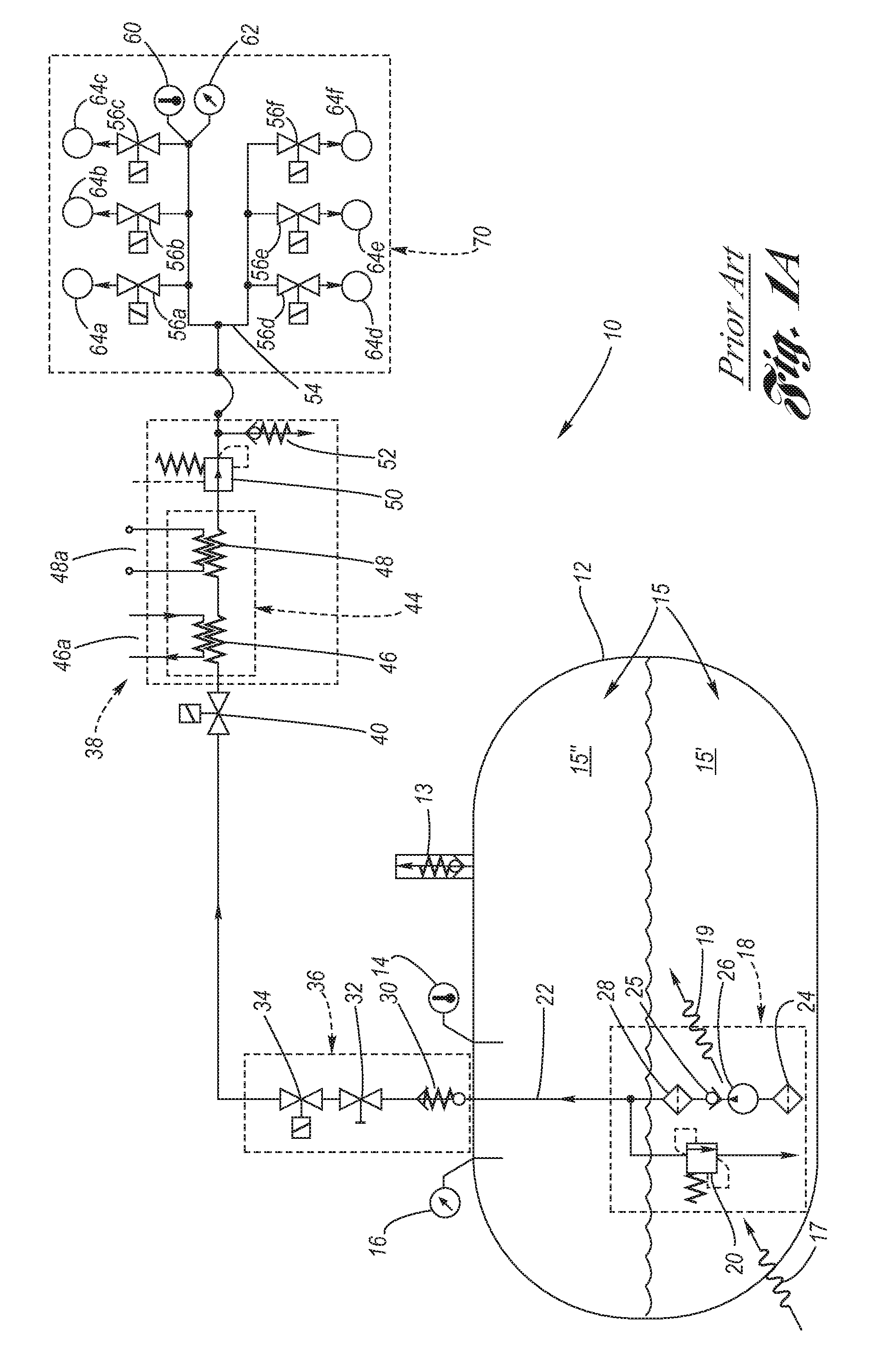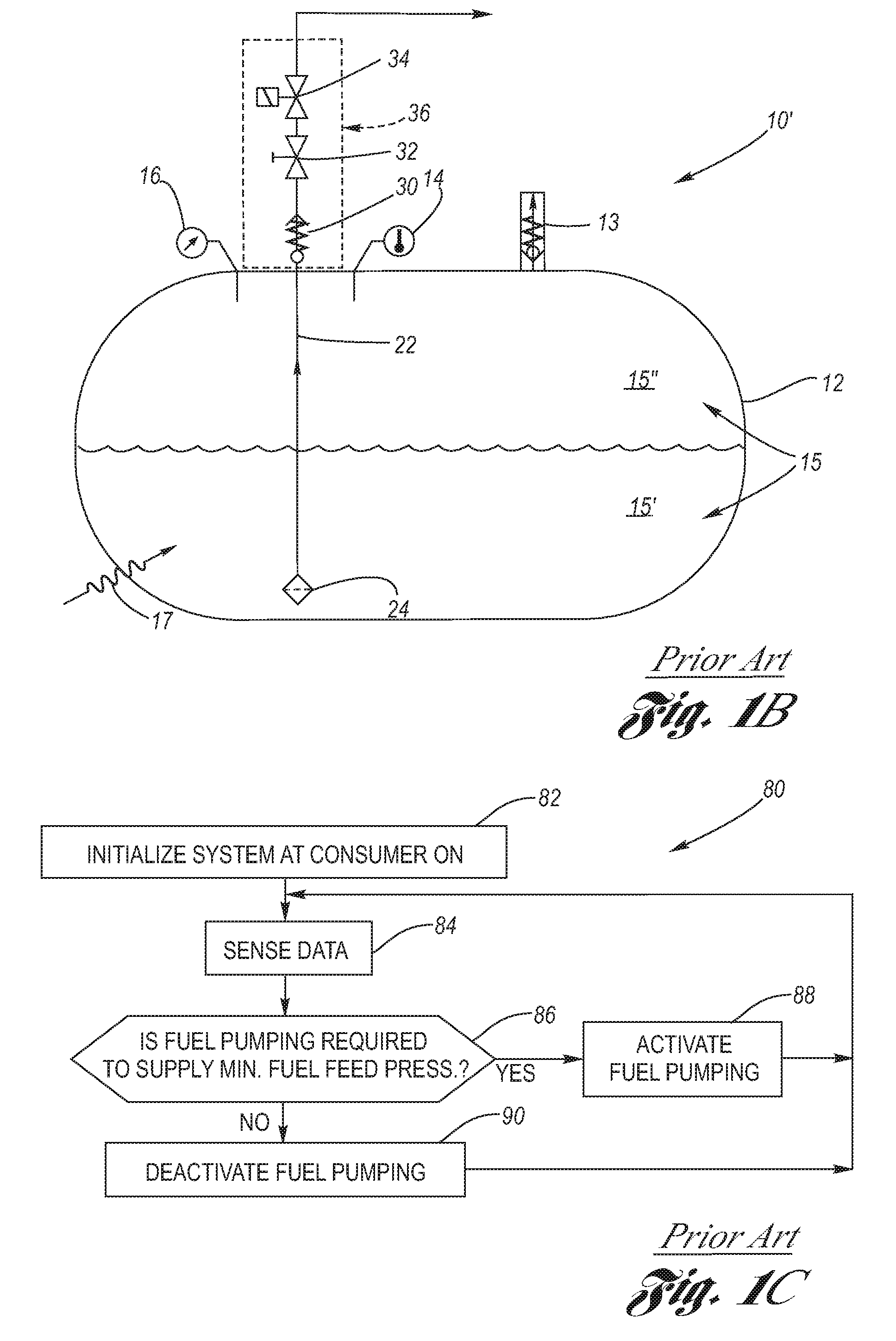Fuel tank temperature and pressure management via selective extraction of liquid fuel and fuel vapor
a technology of liquid fuel and fuel vapor, which is applied in the direction of pressure vessels, containers discharging from pressure vessels, non-pressured vessels, etc., can solve the problems of fuel being more likely to produce unwanted particulate emissions in the exhaust, refilling (or refueling), and consumers being starved of fuel, so as to reduce the vapor pressure inside the fuel tank
- Summary
- Abstract
- Description
- Claims
- Application Information
AI Technical Summary
Benefits of technology
Problems solved by technology
Method used
Image
Examples
embodiment 300
[0089]Turning attention firstly to FIG. 8, a first exemplar embodiment 300 is depicted of the fuel tank temperature and pressure management system according to the present invention, in which control states CS1, CS2 and CS7 of Table 1 are applicable thereto.
[0090]In this LPG fuel system first embodiment 300, LPG fuel 304 in the top of the fuel tank 302 is a saturated fuel vapor (or simply, a vapor) 304V, and therebelow is disposed liquid fuel 304L, wherein the fuel may be any fuel stored at or near its vapor pressure, and need not be LPG.
[0091]The fuel tank 302 is equipped with a pressure relief valve, and may be equipped with a temperature sensor and a pressure sensor, not shown, but each component having been described in detail hereinabove; and the contents of the fuel tank may be subjected to various heats (not shown) as also described in detail hereinabove.
[0092]Contained within the fuel tank 302 are components of a prior art fuel system 306, namely a filter 308, a fuel pump 31...
first embodiment
[0098]The first embodiment is preferred for its simplicity. It should be noted that in the event that check valve 334 fails closed, then the system reverts to the functionality of the prior art fuel system of FIG. 1A. If however check valve 335 fails open, then this could be problematic from the standpoint of liquid fuel delivery via FF1; to reduce the risk of this failure mode, two or more check valves 334 can be fitted in series if required.
[0099]Turning attention now to FIG. 9, a second exemplar embodiment 340 is depicted of the fuel tank temperature and pressure management system according to the present invention, which is a variant of the first embodiment 300 to now have applicability thereto of control states CS1 through CS4, inclusive, and CS7 of Table 1 (two additional control states (CS3 and CS4) relative to the first embodiment), wherein numerals identical to FIG. 8 will be used to designated identical components.
[0100]In this LPG fuel system second embodiment 340, LPG fu...
embodiment 370
[0116]Turning attention next to FIG. 11, a fourth exemplar embodiment 370 is depicted of the fuel tank temperature and pressure management system according to the present invention, in which control states CS3 through CS9, inclusive, of Table 1 are applicable thereto, and wherein numerals identical to FIG. 8 will be used to designate identical components.
[0117]In this LPG fuel system fourth embodiment 370, LPG fuel 304 in the top of the fuel tank 302 is a saturated fuel vapor (or simply, a vapor) 304V, and therebelow is disposed liquid fuel 304L, wherein the fuel may be any fuel stored at or near its vapor pressure, and need not be LPG.
[0118]The fuel tank 302 is equipped with a pressure relief valve, and may be equipped with a temperature sensor and a pressure sensor, not shown, but each component having been described in detail hereinabove; and the contents of the fuel tank may be subjected to various heats (not shown) as also described in detail hereinabove.
[0119]Contained within ...
PUM
 Login to View More
Login to View More Abstract
Description
Claims
Application Information
 Login to View More
Login to View More - R&D
- Intellectual Property
- Life Sciences
- Materials
- Tech Scout
- Unparalleled Data Quality
- Higher Quality Content
- 60% Fewer Hallucinations
Browse by: Latest US Patents, China's latest patents, Technical Efficacy Thesaurus, Application Domain, Technology Topic, Popular Technical Reports.
© 2025 PatSnap. All rights reserved.Legal|Privacy policy|Modern Slavery Act Transparency Statement|Sitemap|About US| Contact US: help@patsnap.com



